ANCIENT EGYPT GALLERIES OPEN AT FITZWILLIAM MUSEUM CAMBRIDGE




The new galleries, befitting of a world-class collection of Ancient Egyptian
antiquities.
The Egyptian Galleries at Cambridge’s Fitzwilliam Museum have re-opened to applause, with stunning new displays and exhibits never seen before.
The popular section of the museum hosts a world-class collection of more than 1,000 objects. A
two-year, £1.5 million project of refurbishment, conservation and research has now been completed to enrich the experience of the museum’s 300,000 annual
visitors.
“We are delighted that the latest stage in our ongoing programme of gallery improvements has reached a successful conclusion,” said Museum Director Duncan Robinson, “and that the Museum is now able to offer visitors an enhanced experience of one of the most popular areas of its
collections.”
Daily life, religious beliefs and burial practices of this most fascinating of ancient peoples are all explored in the galleries, as is the celebrated splendour of the Pharaoh’s court. Magic and superstition, writing, carving and drawing, dress and adornment are all looked at in themed sections.
Visitors will experience the dimly-lit atmosphere of an Egyptian tomb at the heart of the displays, where coffins, mummies and funerary ritual objects are on show.
“The refurbishment of the Egyptian galleries has afforded an invaluable opportunity not only to re-display the collections in a contemporary and dynamic way, and to research and conserve numerous objects,” said Dr Lucilla Burn, Keeper of Antiquites, “but also to provide for visitors of all ages a more coherent and enjoyable experience, rich with information about the exhibits and the culture they represent.”
In depth research was enabled by the temporary closure of the galleries. A major focus was the coffins, which have undergone structural analysis. Human and animal mummies were CT-scanned at Addenbrooke’s Hospital, Cambridge, to shed light on their contents and condition. The intriguing results are to be announced later in 2006.
A special programme of themed events will be held over the opening week (until June 2 2006) including talks, tours and workshops. The mummy-wrapping sessions aren’t just for children, either!
Funding for the project came from the Heritage Lottery Fund, the DCMS/Wolfson Foundation Museums and Galleries Improvement Fund and other
donors.
“The successful outcome of the project is a fitting testament to the commitment and enthusiasm of staff and volunteers, funders, supporters and collaborators,” added Dr Burn, “all of whose contributions are acknowledged with gratitude.”
Fitzwilliam Museum
Trumpington Street, Cambridge, CB2 1RB, Cambridgeshire, England
T: 01223 332900
Open: Tues-Sat 1000-1700 Sun 1200-1700
Closed: Closed Mon (except Bank Holidays when open 12.00-17.00) Closed Good Friday
Hatshepsut:
From Queen to Pharaoh
Fechas de la exposición: Marzo 28 - Julio 9, 2006 La primera reina de Egipto.
La primera exposición monográfica sobre la vida de la faraona egipcia será inaugurada el martes en el Metropolitan de Nueva York con obras procedentes del Museo de El Cairo. El Metropolitan de Nueva York inaugura el martes la primera exposición que se organiza sobre Hatshepsut, la reina que se convirtió en faraona e instauró una de las épocas más doradas del antiguo Egipto. La muestra reúne estatuas, muebles, joyas, utensilios y ajuares que proceden de varios museos y retratan a una gobernante menos conocida, pero que manejó mejor los asuntos de Estado que la más famosa de sus sucesoras,
Cleopatra. La exhibición agrupa obras que prestan por primera vez el Museo Egipcio de El Cairo y el Museo de Luxor, además de piezas que la institución neoyorquina recolectó en campañas arqueológicas en las décadas de los años 1920 y 1930 en el País del
Nilo. Hatshepsut aparece como reina, faraona y esfinge en inscripciones y esculturas que reflejan el esplendor de su reinado de veintiún años, de 1503 al 1482 antes de Cristo, que marcaron el inicio del renacimiento del Imperio Nuevo, del 1540 al 1070 antes de Cristo. "Su Gobierno fue tan importante para Egipto como el de Isabel I para Inglaterra", se afirma en el catálogo de la muestra, que permanecerá abierta al público hasta el 9 de julio. "No fue la primera ni la última, pero sí la más brillante reina que gobernó el Antiguo Egipto", dijo a Efe el director del Consejo Supremo de Antigüedades de Egipto, Zaki Hawas, que viajó a Nueva York para la inauguración. Hawas, máxima autoridad arqueológica de su país, apuntó que "la exposición llega en el momento perfecto para que en estos tiempos se sepa que el Antiguo Egipto fue gobernado también por mujeres, y que una de ellas se convirtió en
faraona". Hija favorita de Tutmosis I y principal esposa de Tutmosis II, Hatshepsut inicio su mandato como reina regente a la muerte de su marido y hermanastro, y después, ya como faraona, asociada al trono con su hijastro y sobrino, Tutmosis III, entonces un niño. Durante su reinado se construyó como nunca antes en el Imperio Nuevo, se restauraron monumentos destruidos durante la invasión de los hicsos y Egipto reanudó el comercio con Oriente Medio, las Islas del Egeo y el País del Punt, en las actuales Somalia y Eritrea. La prosperidad que propiciaron esos intercambios impulsó el arte y la arquitectura, de lo que es mayor exponente el templo funerario de Beir El Bahri, que Hatshepsut se hizo labrar en una montaña cerca del Valle de los Reyes, frente a
Luxor. En contraste con Cleopatra, que vivió 1.500 años después y ha estado siempre envuelta en la leyenda, Hatshepsut permaneció casi ignorada hasta principios del siglo XX, cuando su vida y obra comenzó a atraer el interés de estudiosos y novelistas. La razón que le indujo a proclamarse faraona, y a vestir como un hombre y usar barba postiza, constituye, sin embargo, un enigma sobre el que los egiptólogos no se ponen de
acuerdo La mayoría piensa que lo hizo para ganarse el respeto de su pueblo, pero no todos comparten esa opinión. "No creo que se presentara como un hombre para poder gobernar", dijo a EFE la jefa del Departamento de Egiptología del Metropolitan, Dorothea Arnold, en alusión a que, antes de Hatshepsut, reinas como Sobekneferu y Nicotris, y después la propia Cleopatra, lo hicieron sin necesidad de proclamarse
faraonas. "Creo que fue algo sólo simbólico. Hatshepsut no dejó de aparecer en estatuas e inscripciones con su nombre femenino, nunca ocultó su feminidad", subrayó la especialista sobre el interés que tenía en ser recordada como "una mujer de gran belleza" quien ha pasado a la Historia como el quinto faraón de la décimo octava dinastía. Una belleza que la exposición neoyorquina pone de manifiesto pese a que Tutmosis III, su sucesor y quien posiblemente la asesinó, intentó destruir todas las representaciones de Hatshepsut, e hizo lo posible por borrar su memoria. Fuente: La Opinión. A Coruña.
Imágenes: Tesoros egipcios sumergidos




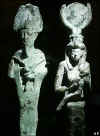
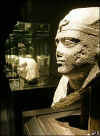
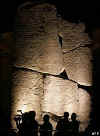
Berlín es el escenario de una exposición de objetos egipcios provenientes
de dos ciudades que se descubrieron hace seis años sumergidas en la costa
mediterránea de Egipto.
-- Egypt’s Sunken Treasures
Exhibition
Venue: Martin-Gropius-Bau
13 May – 4 September 2006
Organizer:
Franck Goddio and Hilti Arts and Culture gGmbH in cooperation with Martin-Gropius-Bau and Berliner Festspiele
Press Contact:
salaction public relations GmbH, Hamburg
Phone +49 (0)40 226 58-322 / -352
Fax +49 (0)40 226 58-333
E-mail: katrin.wollgast@salaction.de
E-mail: susanne.von.karstedt@salaction.de Ver
viaje a Berlín con la Asociación Andaluza de Egiptología para visitar
la exposición de Berlín y el famoso busto de Nefertiti.
Turín expone el mapa más antiguo de Occidente
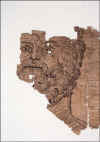
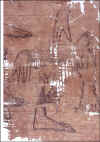
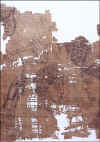
 El célebre papiro de Artemidoro, considerado el mapa geográfico más antiguo de Occidente, ha sido expuesto por primera vez al público este miércoles en el Palacio Bricherasio de Turín, al norte de Italia. El célebre papiro de Artemidoro, considerado el mapa geográfico más antiguo de Occidente, ha sido expuesto por primera vez al público este miércoles en el Palacio Bricherasio de Turín, al norte de Italia.
Artemidoro de Efeso, renombrado geógrafo griego del siglo I antes de Cristo, viajó por todo el Mediterráneo, pasando por España y terminando en Egipto, sin olvidar Italia, donde fue embajador.
Realizó 11 rollos de papiro considerados como los mapas más antiguos jamás encontrados.
Uno de esos rollos, que sirvió para envolver a una momia hace 1.800 años, fue descubierto por un equipo de arqueólogos en los años 90.
El papiro fue comprado luego por un coleccionista egipcio y pasó por diferentes dueños hasta llegar a la Compañia de San Paolo, una fundación privada italiana, que lo compró por 2,7 millones de euros.
 De 2,70 metros de largo, el papiro está muy estropeado, pero los 50 trozos amarillos que lo componen dejan percibir perfectamente, a ambos lados los trazados del contorno de los países, al igual que dibujos de animales reales y fantásticos, de caras, manos y pies humanos. De 2,70 metros de largo, el papiro está muy estropeado, pero los 50 trozos amarillos que lo componen dejan percibir perfectamente, a ambos lados los trazados del contorno de los países, al igual que dibujos de animales reales y fantásticos, de caras, manos y pies humanos.
"Este papiro es único. Se trata del mapa más antiguo de Occidente del que tengamos conocimiento y nos ha permitido reconstruir ciertos episodios de la historia del arte clásico", aseguraron los profesores Claudio Gallazzi y Salvatore Settis, durante la inauguración de la muestra.
La exposición, titulada 'Las tres vidas del papiro de Artemidoro', presenta paralelamente, hasta el 7 de mayo en el mismo Palacio, otras 140 grandes piezas procedentes de una treintena de museos europeos y americanos que ofrecen a los visitantes una visión completa de los usos y costumbres de la época en que fue realizado ese documento.
El papiro de Artemidoro será expuesto posteriormente en diversos museos del mundo. En dos o tres años será instalado definitivamente en el Museo Egipcio de Turín.
Con
la exposición "Los
tesoros hundidos de Egipto" comienza el 13 de mayo un
acontecimiento importante en el Martin-Gropius-Bau. Muestra
testimonios de culturas pasadas que se creían perdidos, que se
encontraron en expediciones submarinas frente a las costas del
Mediterráneo en Egipto. Los más de 500 artefactos, que podrán ser
vistos hasta el 4 de septiembre proceden de las inundadas ciudades del
Mediterráneo Heraclion y Canopus como así también del antiguo
puerto de Alejandría. Por primera vez estas valiosas piezas tendrán
acceso al público en Berlín.
The
Fitzwilliam Museum, Refurbishment of the Egyptian Galleries
[new] date: 2004 - early 2006 [was: 2005]
[new] info: "What's happening in the Egyptian galleries at the
Fitzwilliam Museum?"
http://www.fitzmuseum.cam.ac.uk/projects/ae/index.html
Igiene e bellezza nell'antico Egitto
date: April 30, 2005 - May 31, 2006
info: http://www.abocamuseum.it/storia/egizi-1.htm
25/08/05
Exhibition
of Rare Material from Wilbour Library Egypt
Through Other Eyes
The
Popularization of Ancient Eygpt, presenting more than thirty books,
ranging from the commercial to the commemorative, focusing on Western
fascination with ancient Egypt will be on view in the ancient Egyptian
galleries of the Brooklyn Museum. The long-term installation,
including many works that have never before been on public view, is
the latest in a series of exhibitions presenting rare material from
both the world-renowned Wilbour Library of Egyptology and from the
Museum’s holdings of ancient Egyptian art.
After the publication of Description de l’Egypte, an account of the
Napoleonic expedition to Egypt from 1798 to 1802, publications about
Egypt proliferated because of advances in printing technology that
made available larger and less expensive editions of travel and
history books. Articles about Egypt frequently appeared in newspapers
and periodicals, further spurring interest among a large audience that
was captivated by news of discoveries in Egypt. Included in the
exhibition is a remarkable illustrated color plate from a book by
Giovanni Belzoni, the first known European to enter newly discovered
Egyptian temples and tombs, depicting the Interior of the Temple at
Ybsombul in Nubia, opened by Belzoni in 1817. Among the other works is
an illustrated page by from the catalogue that accompanied an
exhibition of Egyptian antiquities from the collection of Henry Abbott
at Manhattan’s Stuyvesant Institute. Abbot’s collection was later
transferred to the Brooklyn Museum and several of the objects
illustrated in this plate are currently on view elsewhere in the
Egyptian galleries.
Also included in this presentation are: a color plate of Cleopatra’s
Needle in Manhattan’s Central Park from a deluxe limited-edition
volume; chromolithograph plates from books by Emile Presse
D’Avennes, whose work provided the first reliable images of Egyptian
architecture; a promotional piece for a Thomas Cook & Son tour of
Egypt; a book by George Robbins Gliddon, one of the first Americans to
write and lecture about ancient Egypt; and an illustration by Charles
Dana Gibson that depicts an early excavation at the Temple of the
Goddess Mut, where the Brooklyn Museum and Johns Hopkins University
currently maintain an excavation site.
"Immortal Pharaoh: The Tomb of Thutmosis
III"
Fecha: Octubre 2005
The exhibition will display an exact replica of the burial chamber of Thutmosis III. It will also feature artefacts from the Museum of Antiquities
in Basel in Switzerland and the Kestner Museum in Hanover, Germany.
Nota de prensa en:
09/06/05
Fayyoum portraits on display
Dr. Zahi Hawwas has opened an exhibition in the Egyptian Museum in Tahrir
Square showing a number of Fayyoum portraits. The exhibition is set to go on display for two months. It includes 12
portraits and 7 busts considered of major significance. Dr. Hawwas said that the first of such portrait replacing mummy masks and
busts date back to the first century A.C. Pharaohs used them to help their
souls recognize their bodies in the after-life. Dr. Hawwas added that although these portraits could be found in many
places, they are known as the Fayyoum portraits, since it was there that
they were first discovered. Director of the Museum, Dr. Wafaa Al-Seddiq said that the exhibition is
displaying a wealth of monuments. Visitors will become acquainted with the various forms of garments, jewels
and even hair styling of the time. The exhibition has an educational role. It highlights the features of the
Greco-Roman period of the Egyptian civilization. A book will be distributed
for use by the blind.
Fuente: EOL
RECENT FINDS BY RUSSIAN EGYPTOLOGISTS TO BE DISPLAYED IN CAIRO, MOSCOW
Russian archeologists hope to display in Cairo and Moscow their finds excavated in Egypt in recent years, said Galina Belova, Ph.D. (History). She reported about on-going talks on staging an exposition at the National Museum in Cairo.
Galina Belova who heads the Centre of Egypt Studies of the Russian Academy of Sciences, which was set up in 1998 and opened its branch in Cairo in 2000, has been engaged in excavations in Egypt since 1995. Over the past five years, Russian expeditions have been busy digging in Luxor's cache of pharaoh mummies,
investigating into Memphis, examining the temples and settlements in Delta and penetrating the necropolis and a medieval Christian monastery in the town of Al Fayyum. Since 2003, the Russians have been involved in underwater archeological prospecting into the 20-kilometer area close to the Alexandria coastline. Russian restorers have spent the last year rehabilitating wall paintings in the church of al Muallaka in Cairo.
"The contribution by Russian archeologists has been appreciated by the Egyptian side, which is proved by the proposal to participate in the
restoration and studies of three more ancient Coptic churches," said Belova.
Outstanding Russian Egyptologist Vladimir Golenishchev, whose collection of almost 6,000 artifacts is kept at the Pushkin Museum of Fine Arts in Moscow and the Hermitage in St.Petersburg and who made 64 expeditions to the country of the ancient civilization, once dreamt of a purely Russian expedition to carry out excavations in Egypt. From the mid-50s, Egypt hosted distinguished Soviet scholars Mikhail Korostovtsev and Boris Piotrovsky while now research is carried on by the
Center for Egypt Studies.
Exposición.-
Mummies: Death and the Afterlife in Ancient Egypt
Among the peoples of the ancient world, the Egyptians occupy a unique
position with their approach to death and the possibility of
resurrection, particularly since so much of the evidence that has
survived over thousands of years comes from a funerary context. The
largest and most comprehensive collection of ancient Egyptian funerary
material outside of Cairo is housed at The British Museum. As
part of its joint venture with the British Museum, the Bowers Museum
has drawn upon this world-famous collection of mummies and funerary
objects to present Mummies: Death and the Afterlife in Ancient
Egypt.Treasures from the British Museum, opening April 17, 2005. The
extensive exhibition features 140 objects, including 14 mummies and/or
coffins, and is the largest exhibition of its kind to be shown by the
British Museum outside of Britain. The exhibition will run through
April 15, 2007. Mummies: Death and the Afterlife in Ancient Egypt
focuses on embalming, coffins, sarcophagi, shabti figures, magic
and ritual, amulets, papyri, as well as the process of mummification.
The exhibition illustrates in depth the story of the fascinating
Egyptian ritual of preparing and sending the dead to the afterlife,
complete with furnishings created specifically for an
individual's coffin, such as spectacular gold jewelry and a
wooden boat to transport the dead into the underworld. According to
one of the exhibition curators, Assistant Keeper of Antiquities at the
British Museum Dr. John Taylor, the Egyptian mummies and coffins in
this exhibition are of the highest quality and have not been exhibited
for many years. "This exhibition will provide the ultimate look
into the world of mummification," Dr. Taylor said. "We
speak of death as one of the great rites of passage of human
existence. Whether we believe that life continues beyond death, or
ends at that moment, or whether we admit that we do not know, death is
a door through which we must all pass."
06/04/05
Paris to host Nubian Exhib.
- "Nubia Campaign: Yesterday and Today": Exposición en
la sede de la UNESCO, en París, sobre la campaña de salvamento de
monumentos nubios -
An Egyptian Antiquity delegation will soon fly to Paris to participate
in the "Nubia Campaign: Yesterday and Today" exhibition. It
has been organized by UNESCO headquarters in Paris on 13 April. This
exhibition gives a retrospective look at the Nubia Campaign, which
began with a drive to safeguard Nubian monuments and has since seen
the opening of the Nubia Museum in Aswan and the National Museum of
Egyptian Civilization in Cairo. The Secretary-General of the Supreme
Council of Antiquities, Zahi Hawas, said that the exhibition,
comprised of videos, books and documents, illustrates the enduring and
fruitful relationship between UNESCO and Egypt in cultural heritage.
Hawas also commended Egypt's restoration of approximately 3,000
previously smuggled antiquity pieces back to the country. These had
been recovered from all over the world, including Belgium,
Switzerland, UK and Germany. Hawas noted that a new antiquity
protection draft bill had been drawn up by the State Council and is to
be submitted to the People's Assembly for discussion and
approval. He revealed that for the increased protection of Egyptian
antiquities, 33 new antiquity stores had been equipped with the latest
electronic equipment to prevent smuggling. In addition, 3,000
new guards have been appointed to antiquity sites. According to Hawas,
visits to Egyptian antiquity sites have added LE70 million to tourism
revenues in the past two month alone.
Fuente: EOL
Exposición
Fotográfica "Nubia before the flood"
The Sony Gallery for Photography American University in Cairo
date: til March 3, 2005
The exhibit includes drawings, gouaches, plans and photographs of
Nubian houses and villages by the internationally renowned Egyptian
architect, the late Hassan Fathy -- this in addition to David Roberts'
prints, illustrations from La Description de l'Egypte, and photos of
theNubians and the monuments of Nubia by K.A.C. Creswell and Margot
Veillon. Early maps and travel accounts of Nubia from the Rare Books
special collection as well as craft items and textiles, courtesy of
the Nubia Museum, are also on display...
Nota de prensa:
http://weekly.ahram.org.eg/2005/729/fe2.htm
La
Nubie, lieu de mémoire
Exposition. La Nubie est à l'honneur, pour presque un mois, à la
Bibliothèque des livres rares et de collections spéciales, ainsi qu'à
la galerie Sony, les deux dépendant de l'Université américaine du
Caire (AUC).
Mostra "L'enigma di Harwa. Alla riscoperta di un capolavoro del rinascimento
egizio"
Europa » Italia » Torino
15 dicembre 2004 - 23 gennaio 2005
Questo dicembre a Torino, a due passi dal Museo Egizio, si scoprirà "L'enigma di Harwa", un misterioso personaggio, alto sacerdote ma anche
potentissimo dignitario, vissuto tra la fine dell'VIII e l'inizio del VII
secolo a.C. quando l'Egitto era nelle mani dei faraoni nubiani della XXVdinastia. Diciotto reperti provenienti dal Museum of Fine Arts of Boston,
dal Louvre, dal Museo Egizio di Torino e da altre importanti raccolte ne
daranno testimonianza tangibile. Ma sarà anche una mostra sempre diversa da tornare a vedere: si potrà
infatti assistere in diretta da Luxor, giorno dopo giorno, ai faticosi e
delicati lavori che fanno riemergere quel complesso e variegato momento
storico. Una doppia postazione Internet collega infatti la mostra con il
sito archeologico sulla riva occidentale del Nilo, davanti al tempio della
regina Hatshepsut a Deir el-Bahri e sarà accessibile sia da Palazzo Bricherasio, sia da casa propria, grazie a un codice d'accesso personale che
verrà consegnato a ogni visitatore.
Ingresso libero
Lunedì 14.30 - 19.30 / Martedì, mercoledi, venerdì e domenica 09.30 - 19.30
/ Giovedì e sabato 9.30 - 22.30
Infoline: 011/5711811
Località della manifestazione: Torino, Palazzo Bricherasio
Link: http://www.palazzobricherasio.it
11/02/05
Exposición
en el Aukland Museum
Egyptian mummy [575 - 850BC]
In 1998, the Museum's only adult Egyptian mummy was removed from
display during gallery refurbishment. Conservation staff had the
opportunity to carry out a thorough examination of the mummy and
coffin and identified two a jor deterioration problems - the presence
of salts on the surface of the linen wrapping and flaking paint on the
wooden sarcophagus. Identification of materials was undertaken and
treatment begun to stabilise problem components. Thorough testing of
adhesives and application methods was undertaken before securing the
flaking paint to the wooden substrate using a cellulose ether
dissolved in a slow-evaporating solvent. Areas of fragile wood on the
coffin were consolidated with an acrylic resin and fills made where
necessary using a combination of paper pulp and a cellulose
ether. A variety of poultices were tested with the aim of solubilising
and removing salts from the bandages using a minimum of water. A
cellulose pulp proved most effective and was applied successively to
small areas, gently removing the surface deposits. As
conservation treatment proceeds, a volunteer Egyptologist is working
to decipher the hieroglyphs which decorate the coffin. Her task is
made even more difficult by severe fading of the inscriptions, but she
hopes to find clues to the identity of the mummy and even details of
the person's life and death. Further information will be gleaned when
the mummy undergoes a CAT-scan. This non-destructive examination may
reveal the sex, age at death and state of health of the
mummified person. The age of the mummy is uncertain. Samples of linen
and wood from the bandages and coffin have been radiocarbon dated at
the University of Waikato. Results ranged from 575-850BC, but these
figures relate to the plant from which the linen came and the
wood from which the coffin was made. Since both wood and linen were
recycled in ancient Egypt, the dates give us only a rough guide to the
mummy's age. These estimates now need to be balanced against the
stylistic and inscription evidence of the mummy and coffin. Once
conservation treatment is completed, the mummy will go back on display
in a dedicated gallery on the Ground Floor. It will be displayed in a
nitrogen-filled display case originally designed by Shin Maekawa of
the Getty Conservation Institute. This low-oxygen atmosphere will help
to retard further deterioration of the mummy and coffin and ensure the
lengthy conservation treatment does not need to be repeated
11/02/05
Muestra sobre culto al sol en Egipto llegará a México
México, (EFE).- Una muestra del culto al sol durante la época de los
faraones egipcios que contiene 150 piezas procedentes de diversos
museos de Alemania y que nunca ha salido de ese país, llegará a México
a fines de marzo próximo. El Instituto Nacional de Antropología e
Historia (INAH) señaló en uncomunicado que la exposición será
inaugurada el 31 de marzo en el Museo Nacional de Antropología. El
responsable mexicano de la muestra, Miguel Ángel Fernández, explicó
que la exposición estará dividida en 13 secciones, cada una de las
cuales abordará un tema específico en relación al culto solar que
ofrecerá un panorama sobre los antiguos egipcios basado en el
desarrollo de sus creencias, técnicas y deidades. Entre ellas
figuran, las formas del Dios-Sol, la escalera al cielo, la pirámide,
el sol y el inframundo, los sacerdotes, el Dios-Luna, el cielo, y
Alemania y el redescubrimiento del antiguo Egipto. "Cada sección
estará planeada para ofrecer un panorama de las etapas de la Dinastía
18 del Antiguo Egipto, que fue la más vistosa y en la que se acrecentó
el culto al sol", dijo Fernández, investigador del INAH. La
exposición "Faraón: el culto al sol en el antiguo Egipto"
también permitirá a los mexicanos observar las analogías
culturales, artísticas, religiosas y arquitectónicas entre las
culturas prehispánicas de México y el Egipto faraónico, a través
del culto que ambos rindieron a elementos de la naturaleza y del
cuerpo humano", indicó. Ambas culturas construyeron pirámides,
esculturas cúbicas y de relieves, el sol fue un elemento religioso
central en sus civilizaciones y abordaron el concepto de dualidad,
entre el día y la noche, sol y luna, vida y muerte y masculino
y femenino, entre otros. Entre las piezas que podrán ver los
mexicanos figuran un obelisco con jeroglíficos de 3.5 metros de
altura, la cabeza colosal del rey Tutankamón, la denominada
"Cabeza verde", la estatua de Sesenmut y una figura del dios
Horus de 1.63 metros. También vienen el sarcófago de Anch-Hor, de
seis toneladas de peso, un papiro del periodo Tolemaico de 9,85
metros, una cubierta de momia policromada una estatuilla en alabastro
de Akenaton y una esfinge monumental en granito rojo. El INAH destacó
que como parte del intercambio cultural entre mayo y agosto de
2004 se presentó en Alemania la exposición "Aztecas", que
congregó a 150 mil personas.
Fuente: El siglo de Torreón
23/01/05
Tutankhamun Treasures to Go on Display in Dome
Treasures from the tomb of Tutankhamun will come to Britain for the first
time in 35 years, it emerged today. The pharaoh's gold crown will be among 50 artefacts excavated from his tomb
to go on show at the Millennium Dome. More than 130 treasures from the Valley of the Kings, all between 3,000 and3,500 years old, will make up the exhibition.
One of the gold and inlaid canopic coffinettes which contained the boy king'
s mummified internal organs will be included in the show. Artefacts from other royal graves including the intact tomb of Tutankhamun's
great-grandparents Yuya and Tuyu will go on display at the Greenwich attraction.
Zahi Hawass, secretary general of Egypt's Supreme Council of Antiquities,
said the golden artefacts had not left the country for nearly 30 years.
"Since the discovery of his tomb in 1922, Tutankhamun has captured the
hearts of people around the world. Buried with him were treasures beyond the
imagination, giving us a glittering glimpse into the past," he said. The 2007 event will be the first of its kind in Britain since 1972 when the
British Museum in London hosted a Tutankhamun exhibition. A British Museum spokeswoman today said visitors queued in the street to get
tickets for the hugely successful 1972 show. "It still remains one of the most popular exhibitions in this country,
attracting 1.7 million visitors," she said. A spokeswoman for Anschutz Entertainment Group, which takes ownership of the
Dome in 2007, today confirmed that the Tutankhamun exhibition was coming to
the Greenwich attraction. "That kind of calibre of fantastic exhibition is just one example of the
type of thing that is going to be on offer," she said. The spokeswoman said the Egyptian
treasures would go on display at some point in 2007 although exact dates have not yet been confirmed.
The Tutankhamun and the Golden Age of the Pharaohs exhibition starts a
27-month tour of the United States in June this year. It is organised by National Geographic, AEG Live Exhibitions and Arts and
Exhibitions International, with cooperation from the Egyptian Supreme Council of Antiquities.
Tutankhamun's undisturbed burial chamber was discovered in Egypt's Valley of
the Kings by the English explorer Howard Carter in 1922. A 26,000 capacity sports and entertainment arena contained within the Dome
is due to be completed by spring 2007.
Fuente: The Scotsman
Tutankhamun
and the Golden Age of the Pharaohs
"After
almost three decades the ancient Egyptian tomb treasures of King
Tutankhamun will be making a return visit to U.S. shores. A new
exhibition, 'Tutankhamun and the Golden Age of the Pharaohs,' will
travel the U.S. for
27 months starting in June 2005. Stops will include the Los Angeles
County Museum of Art, Florida's Fort Lauderdale Museum of Art, and the
Field Museum of Chicago. Over 130 funerary objects that have rarely or
never traveled broad before are part of the exhibit. The
3,300-to-3,500-year-old artifacts come from the tombs of 18th-dynasty
pharaoh Tutankhamun and others buried in the Valley of the
Kings."
TUTANKHAMUN
The Golden Beyond. Treasures from the Valley of the Kings
4 November 2004 - 1 Mai 2005
An exhibition organized by the Art and Exhibition Hall, the Supreme Council of Antiquities Cairo and the Egyptian Museum Cairo in Cooperation with the Antikenmuseum Basel and Sammlung Ludwig.
The Kunst- und Ausstellungshalle (Art and Exhibition Hall of the Federal Republic of Germany) in Bonn in collaboration with the Deutsche Telekom was successful in bringing the fascinating treasures from the tomb of the legendary Pharaoh Tutankhamun to Germany. The first station in
Europe is the Basel Museum of Ancient Art (until 3 october). For the first time in over 20 years we now have the possibility of a reunion with many of the exhibits of the legendary shows in Paris, London and Cologne. Exposición
Pharaon en París Les
visages de Pharaon
L'Institut du Monde Arabe à Paris (IMA) présente Pharaon, à partir
du 15 octobre et jusqu'au 10 avril 2005. L'exposition retrace les
diverses représentations de cette figure légendaire, au cour de la
civilisation de l'Egypte antique.  Ceramics
in Antiquity Egypt, Near East, Greece Ceramics
in Antiquity Egypt, Near East, Greece
1 July-
26 September 2005
Richelieu
Wing
Open daily, except Tuesdays, 9am - 5:30 pm.
Evening openings until 9:30 pm on Wednesdays and Fridays.
Free
access with the Museum ticket.
Continuing its exploration of creative
techniques, which began with the "Ivories" exhibition, the Louvre
turns to the birth and development of arts involving fire-hardened vitreous
materials. Through a presentation of masterpieces of antiquity from the museum's
collections, the exhibition provides an overview of the different techniques and
uses.Curators :
- Annie Caubet, Oriental Antiquities Department, Louvre Museum.
- Geneviève Pierrat, Egyptian Antiquities Department, Louvre Museum.
Ancient
papyrus on show
One
of the oldest maths textbooks in existence will delight young visitors to
Birmingham's Museum and Art Gallery.
The
3,000-year-old document is part of a new exhibition of Ancient Egyptian wonders
starting on Saturday.
Called
the Rhind Mathematical Papyrus, it is the first of a series of loans to
Birmingham from the British Museum.
It
offers the solutions to 84 mathematical problems encountered by administrative
and building workers in the Ancient Kingdom of Egypt.
City
culture chief Coun Nigel Dawkins, said the loan made a valuable addition to the
museum's own collection of ancient Egyptian artefacts.
"This
piece of papyrus is irreplaceable and will be a source of fascination for people
interested in ancient Egypt," he added.
*
The Papyrus exhibition will run from Saturday, September 11 until March 13,
2005. An Egyptian Weekend of family events is also planned on November 6 and 7.
The
Revealed Nubia Sudan, sacred land of the Nile
Photographic Exhibition 4th - 19th september 2004
Selam Gallery (203, rue St Martin-75003 Paris)
http://www.patrimoines-du-globe.org/index.php?page=evenements_UK
TRÉSORS D'ÉGYPTE
La « Cachette » de KarnakTRÉSORS D'ÉGYPTE
La « Cachette » de Karnak
du 4 septembre 2004 au 3 janvier 2005
Musée dauphinois à Grenoble
http://www.musee-dauphinois.fr/expositions/tresorsdegypte/index.html
Sudan: ancient treasures
British Museum
9 September 2004 - 9 January 2005
Exposición y Conferencias.Más
información:
In recent months, the eyes of the world have been on Sudan. It has never been
more important to understand the different civilisations and the complex history
of this, the largest country in Africa, for millennia the point of contact
between central Africa and the Mediterranean world.
http://www.thebritishmuseum.ac.uk/whatson/comingsoon/index.html
http://www.thebritishmuseum.ac.uk/whatson/events/lectures.html#lunch
Perfumes
exhibition planned -
Planeada una exposición sobre perfumes y maquillaje en el antiguo Egipto -
Perfumes and Make-up in Ancient Egypt" is the title of an exhibition to be
held in Sharm El-Sheikh in a few weeks' time. The ancient Egyptians took much
interest in perfumes and cosmetics. The exhibition will give a thorough idea
aboutthem since pre-historic times until the Late Age.The items on
display, said Ingie Fayed, supervisor of the exhibition, will show how the
ancient Egyptians explored the surrounding environment and extracted from its
plants oils and scents and fats from the animals. The ancients used stones for
jewellery and for making cosmetics. Perfumes,explained Fayed, had a close
relationship to religious rituals and were used on sacred occasions, in
mummification and funerary rituals and was part of daily traditions. The
perfumes the ancients made show how advanced they were in chemistry, shesaid,
adding that they also made, medical prescriptions of ointments that treat
women's diseases and help in child and mother care. Fayed explained that the
ancient Egyptians believed that aromatic oils wereliquids coming from the gods,
on which they depended for the renewal of their lives. Egypt was so advanced in
perfume making that the historian Bellini said that Egypt's scents were the best
and the most expensive.
Ancient Egypt
From 10 July
Egyptian artefacts, including jewellery, statuettes and pottery on show for the first time after a recent research project with Petrie Museum of
Egyptology.
http://www.buckscc.gov.uk/museum/exhibitions/egyptians.htm
03/06/04
Minia pictures show potential
- Exposición de Fotografía en Minya -
A cultural week has been sponsored at Minia governorate by the Italian cultural centre with a view to highlighting the archaeological potential of
the governorate. Among the week's activities was an exhibition of photographs' including
photographs of the tomb of Khnum Hoteb, Governor of Central Egypt and the tomb of Meri Ra, chief priest in Aton.
Some of the photographs, show monuments of the Graeco-Roman Age in the remains of granite pillars, remains of a Greek
marketplace established in the reign of Ptolemy I in addition to photographs of the monastery of the
Virgin Mary carved in the rocks at a mountain and which is believed to have sheltered the Holy Family on the journey to Egypt.
The exhibition also included photographs of Islamic landmarks in Minia AL Hassan Ibn Saleh, Abu Samra and Seidi Ahmed AL Fuli mosques. Les
Céréales en Égypte ancienne
Virtual
exhibition:
"Une nouvelle exposition virtuelle sur le site d'Agropolis-Museum
réalisée en collaboration avec le musée d'agriculture ancienne du
Caire." - Soon available in English.
http://museum.agropolis.fr/pages/expos/egypte/index.htm
|
Mummy:
the inside story
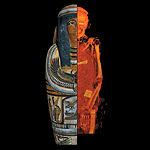
|
From 1 July, an
extraordinary virtual reality film and its accompanying exhibition will be
unveiled at the British Museum. For the first time, the unopened
3,000-year old mummy of Nesperunnub, priest of Karnak, will reveal its
secrets. Using Computed Axial Tomography (CAT) scan technology and the
latest 3D images, you will be able to see inside the cartonnage, the
mummification, even inside the body, and wonder at Nesperunnub's recreated
face. Don't miss this extraordinary insight into the life and death of the
Ancient Egyptians.
Mummy:
the inside story
|
|